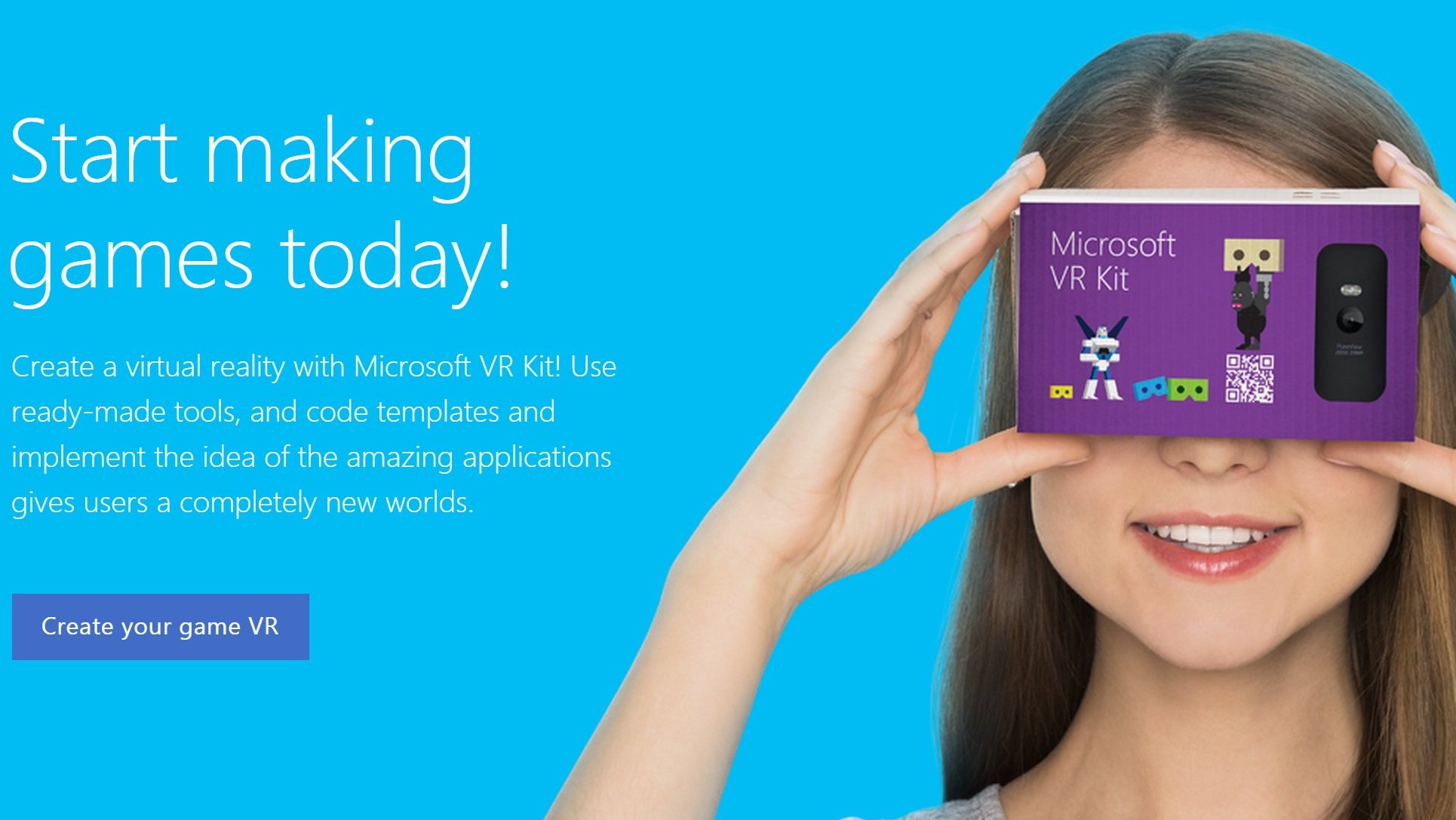 NEWS
NEWS
 NEWS
NEWS
 NEWS
NEWS
While Microsoft is working hard to produce technologies for augmented reality (AR) with its amazing HoloLens–which would likely supplant Google, Inc.’s Google Glass–the software giant may be also making inroads into AR’s near cousin virtual reality (VR). Thurrott.com author Brad Sams spotted the Microsoft VR Kit on a website connected with a Russian Hackathon. The device looks extremely similar to the low-cost VR project Google Cardboard.
In fact, just like Google Cardboard, the Microsoft VR kit works by inserting a smartphone (a Lumia in this case) into a cardboard box.
There is currently no official announcement for this hackathon–and the website connected to it appears to have been accidentally leaked. (The website is currently offline and displays a 404 error.)
The hackathon is planned for October 17th and is aimed to attract developers to write apps and software for the VR kit. The “successful” developers at the hackathon, or those who produce viable apps during the time, will receive a VR kit from Microsoft. The hackathon is split into three categories–game, education and corporate app–and it appears that winners will be selected from each category.
A photo grabbed from the site before it went offline also suggests that the VR kit will come with an SDK, templates for VR coding and example code to get developers started.
The year 2016 is going to be a boom for virtual reality devices with the release of Facebook Inc.’s Oculus Rift, Samsung’s Gear VR, Sony’s PlayStation VR (formerly Project Morpheus) and Valve Corporation and HTC’s Vive. Google came to the game early with the interesting approach of just turning smartphones into low-cost VR devices using a cardboard box: thus Google Cardboard.
Google’s approach put the company’s VR play on the map and appears to be designed to pull in developers to start thinking about mobile VR gaming and VR gaming in general. In fact, there are many good reasons to start developing for Google Cardboard right now.
The companies listed above, all producing dedicated hardware for VR gaming, socialization and business apps will soon be flooding the market with consumer and corporate interests involved. Low-cost applications that allow the everyday consumer to go from mobile to low-fidelity VR, after all this is just putting a cardboard box around a smartphone, provides a bridge between mobile and VR (and consumers don’t need to be on the couch to use it).
Microsoft and Google are also not the only game in town on this particular mobile-to-VR play. For iPhone users, mobile app RoundMe uses Google Cardboard’s cardboard to make those phones into a VR device. And, California-based startup FullDrive Inc. has produced a plastic headset for iOS and Android devices that also turns them into VR devices.
With all of these devices entering the VR space and entertainment starting to catch up, it’s obvious that there’s a market still forming but it will depend on VR devices becoming commonplace. Already Lions Gate Entertainment Corp is looking to bring popular action movie John Wick to VR and Discovery Channel is throwing Shark Week into VR to make the experience even scarier. These are only two examples of where the market is headed.
THANK YOU